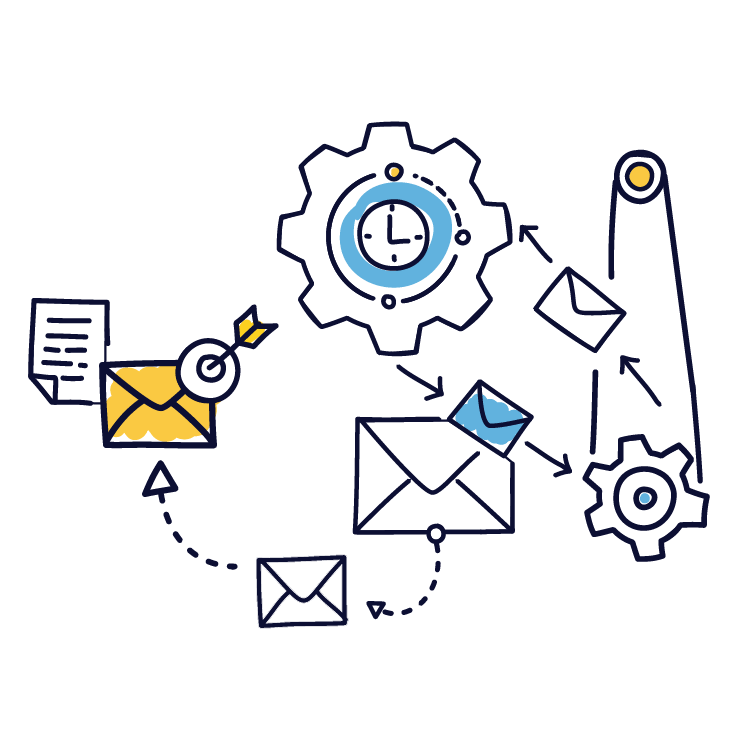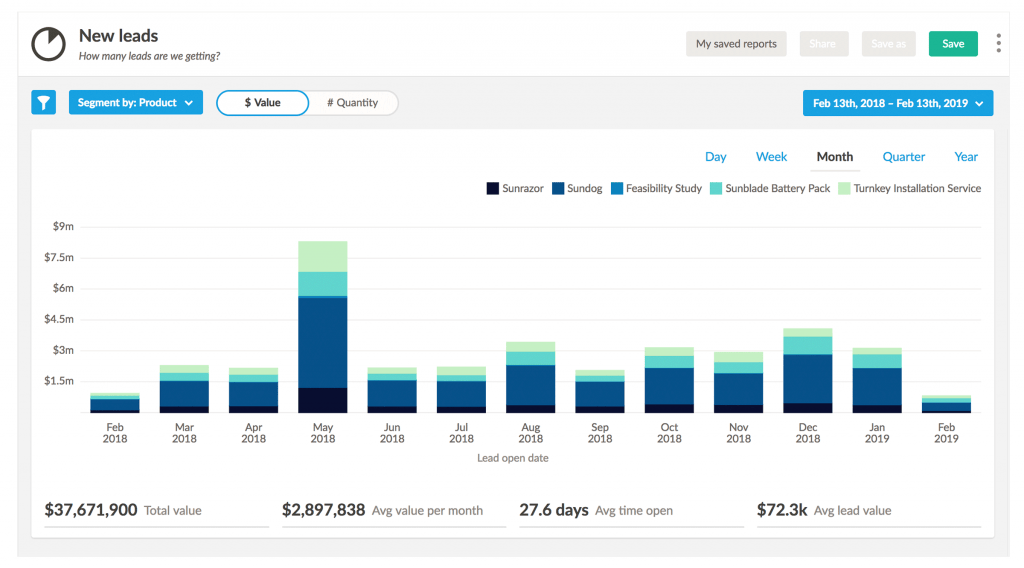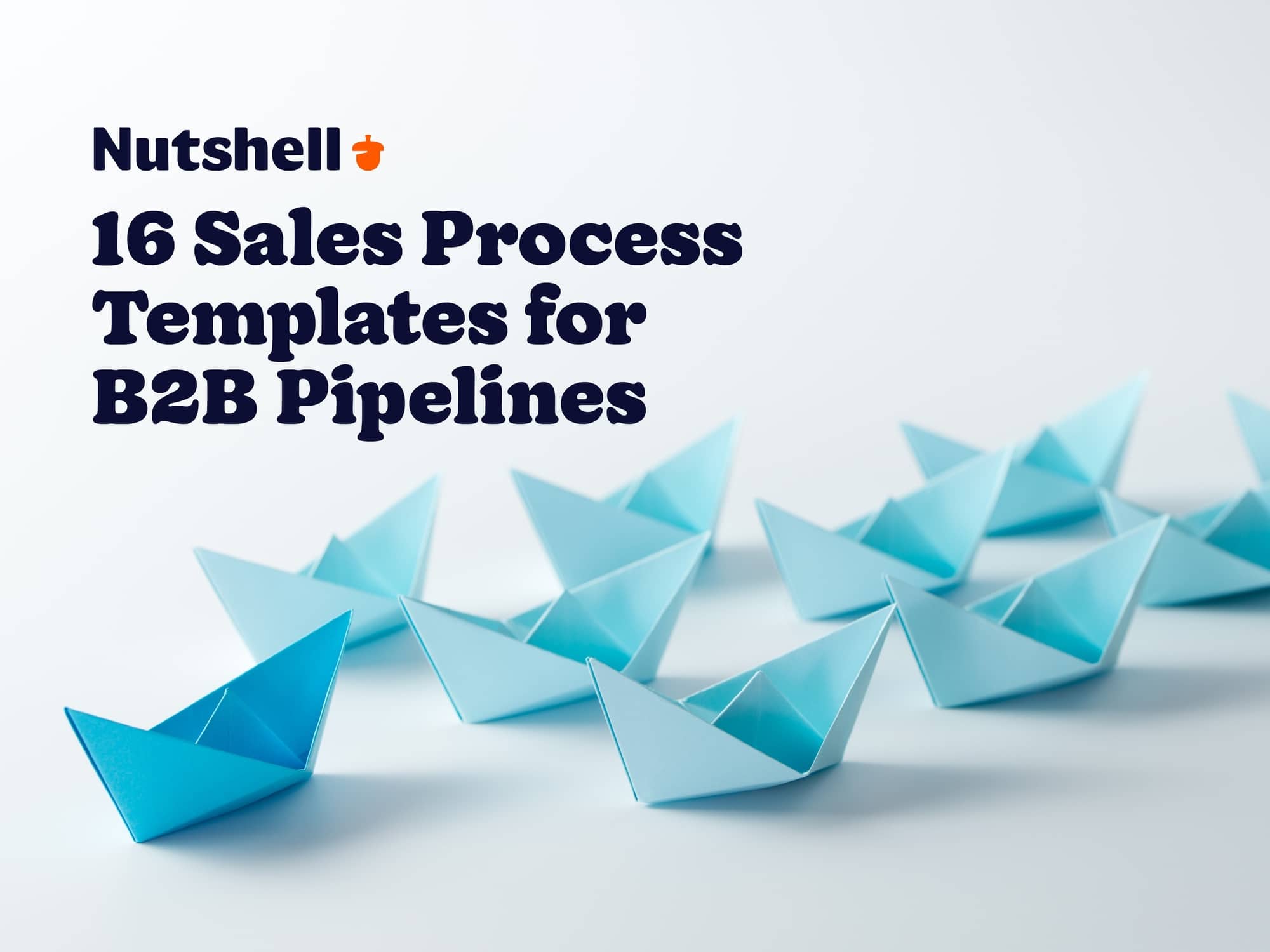
Keeping track of what’s going on in your sales pipeline is critical.
Your pipeline gives you an inside look at how your sales process is performing, and whether or not improvements need to be made.
Unfortunately, prospects can get lost in the shuffle or end up becoming inactive. So what should you do when you find that leads are dropping off or getting stuck? Use lead management best practices so your sales team can focus on nurturing prospects who need your offerings and closing more urgent deals.
If you’re looking for ways to have an effective lead management process, you’re in luck. In this blog post, we’ll discuss 14 of the most effective lead management best practices.
Lead management is the process of collecting lead information and nurturing them until they convert into customers. Monitoring your leads’ interactions with your business is also part of an effective lead management process, as it helps you better understand your consumers.
When you do a bit of digging, you’ll likely be able to link inactive leads to a few specific causes.
If you don’t have the right contact information for the decision-maker at a company, you won’t be able to make a sale. Alternatively, a prospect may enter an email address that they don’t use very often when they fill out a form on your site. This is a problem in both cases because your message isn’t getting in front of the people who need to see it. Take a look at the bounce rates for your emails. If they’re high, that’s one indicator that you aren’t selling to the right person (or anyone at all).
Another reason why a lead might be stuck is that they are having trouble using your solution, or they think it’s too expensive when compared to similar options. Whatever the case may be, it’s important to find and fix any issues that are within your control. While you won’t be able to please every prospect, making the right changes can have a great impact on your bottom line. For example, if you’re finding that a lot of users abandon the account creation process on your site, do your best to reduce friction at that step.
It might be that your prospect isn’t sure that they want to make a change and adopt your solution. The majority of people won’t be ready to buy the minute they enter your pipeline. As a result, you have to focus on nurturing and education during your early pipeline stages. Not doing so can leave some prospects hanging without the confidence to make a purchase. You can increase the chances of making a sale by being helpful and relevant.
Once you know what’s getting your prospects stuck, you’re faced with another challenge: How do you remove those snags and advance them through your pipeline?
The good news is that when you put the right lead management tactics into action, you can get those leads moving forward again. Let’s go through 14 lead management best practices that you can emulate to close more deals this year:
What’s your strategy for communicating with prospects in the different stages of your pipeline? Sending out an email blast to every person on your list once a month isn’t going to cut it if you want to steadily encourage prospects toward a purchase.
First, think about your sales process and what your leads need at every stage. Then, segment those leads into different lists. You should have a strategy that speaks to your leads’ curiosity, concerns, and pain points.
According to MailChimp, segmentation is a major factor in any email marketing campaign’s success. They found that campaigns with segmented lists got 100% more clicks when compared to non-segmented campaigns. More clicks = more sales.
Are you falling off your prospects’ radars? With Nutshell’s personal email sequences, we’ll remember the follow-up for you.

Are your prospects casually considering a product/service like yours or are they in urgent need of a solution? If leads are stuck in your pipeline, it might be that they don’t need your product or service yet. Maybe they can’t decide if your solution is a good investment for their needs. Knowing this allows you to nurture them properly.
Understanding where your leads are in the buyer’s journey helps you market to them more effectively. You can find out what your leads are thinking by asking them to reply to an email or by sending out a survey. For all new leads, you might want to consider setting up a questionnaire so you can easily collect more information about them and their business.
With PeopleIQ, you can track and identify the companies and people visiting your website even before they fill out a form, enabling you to proactively target potential customers.

Marketing, sales, and customer service teams all benefit from segmentation. Persona segmentation helps marketing teams craft effective campaigns with relevant messages to different buyer personas.
Service teams can segment customers so that they can improve their support efforts for different groups of customers. Do some customers prefer email support or phone calls? Your customers will need assistance with different features or aspects of your product or service.
Meanwhile, sales teams can segment leads to customize the buying process for different prospects. Does it make sense for your team to segment leads based on products they’re interested in, their location, or the number of times they’ve purchased from you?
Organize and segment your leads according to categories that will help you improve their customer journey and make your process more efficient.
Do you have a standardized and organized way of collecting lead data? If you don’t, it’s time to systematize your lead collection and ensure each lead data follows a standard data format.
A standardized and organized way to collect lead data may not impact your sales process today. As you grow your business and nurture relationships with these leads, having correct lead data and using a uniform format can save you time and avoid confusion.
Not sure how to start? Here are some tips:
To effectively manage your leads, you need a more robust tool than a spreadsheet. You can ensure your lead data and profile are always up to date with a customer relationship management (CRM) platform, as everyone on your team can access it after every lead nurturing activity.
Do you need to send follow-up emails? A CRM can help you create email drip campaigns so you don’t miss sending out follow-ups. You can avoid sending duplicate emails with a CRM, as everyone can view the most recent transactions and conversations with each lead.
Manual data entry is not only inefficient, but also a possible source of error. Minimize errors and maximize efficiency with the different automation tools available in your CRM. Some of them are:
Nutshell has what you’re looking for.

Are lots of leads getting stuck in one stage of your pipeline? If so, re-evaluate that stage of your sales process. To understand how to fix these stalled stages, you need to think about two things: what’s happening, and what should be happening.
What are your specific goals for each stage in your sales process? How close are you or your prospects coming to meeting these goals? What can you do to make it easier for your leads to move to the next step or make a decision?
Do you have a healthy sales pipeline? Track and measure your lead data using insightful reports and dashboards.
These dashboards show how your team is performing. Having reports that break down the performance per stage lets you identify the stages where your sales team struggles or which are highly efficient.

Have you ever purchased from a business that sent you a follow-up email about a product you added to cart but never purchased?
Keep your leads engaged with your business, so they smoothly move through your sales funnel. Send timely and personalized emails that guide your prospects to purchase from you. A cart abandonment email or an email offering a sales demo are some excellent lead nurturing examples.
If you determine a lead is having trouble making a decision or getting buy-in from their company, what can you do to help? What can you give your leads to establish more trust? You could offer a free e-book, trial, consultation, coupon code, or other resources. An important thing to remember is that a good offer is valuable to your audience. It should also be made available to the right buyer at the right time.
Again, the key here is making sure that your contact list is segmented properly. You don’t want to send a guide explaining why your type of service is important to a lead who is already in the decision stage of the buyer’s journey.
If your prospect is not feeling an urgent need to make a purchase, set an expiration date or offer a discount. According to a report by Experian, adding urgency to your email marketing efforts can increase open rates by 14%, click-through rates by 59%, and double the number of completed transactions. To make the most of urgency in your emails, include the offer and the time limit in your subject line.
Note: Be cautious when using this strategy. If you’re going to create urgency, make sure that it’s based on something real. Claiming that a trial offer will be available for one day only but keeping it up for weeks is a quick way to lose credibility.
Can’t get a lead to close the deal? Start listening. Ask them questions so that you can understand their issue or hesitation. If you ask your prospect a question that will engage them, you have a good chance that they’ll reply. Then, you’ll gain insight on exactly what’s holding them back. This is another good opportunity to use a survey or send an email with a short and specific question. Send something that your leads can answer in just a few minutes.
You probably have a sales process in place. If you don’t have one, it’s time to create one to structure your sales team’s activities. A sales process shortens the sales cycle and guides your sales representatives as they close deals.
Create a live documentation of your sales process to identify inefficient efforts and duplicated tasks. Knowing these bottlenecks is half the battle. The other half is addressing them to streamline your selling process.
Make sure you keep your sales process documentation updated!
Whether you’re building your first sales process or overhauling an existing one, these Nutshell-approved templates will give you a great head-start.

The average rate of data decay is 30% every year. Keep your lead data healthy by practicing good CRM data hygiene, which helps ensure that your data is as accurate as possible.
Regular CRM data cleansing is a helpful activity that removes inaccurate, incomplete, duplicate, and corrupted data. Do some of your emails go unopened? Does a lead stop engaging with your business after a certain period? It’s a good idea to let go of these leads.
Managing your leads is a crucial piece of your sales process. With the help of a robust but user-friendly CRM like Nutshell, you can nurture leads more efficiently and effectively. Nutshell has powered more than $600 million in sales per year.
In addition, our partners over at WebFX are lead management experts, having helped its customers generate more than 7.8 million leads. Together, Nutshell and WebFX can help you with your lead management process and drive results for your bottom line.
Want to see how Nutshell can help your business? Try it for free for 14 days.


Join 30,000+ other sales and marketing professionals. Subscribe to our Sell to Win newsletter!